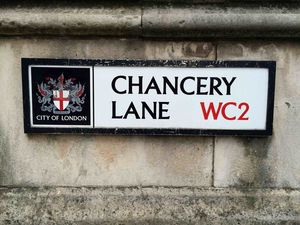Literary Tourism
By Kate Sutherland
Every time I visit London, I stay in a different area. This time, I’m just a few blocks from Chancery Lane, in the heart of Dickens’ London. I suppose all of London is Dickens’ London given the extent to which he and his characters traversed the city. But Bleak House is my favourite of his novels so, for me at least, this is the heart of it.
On my very first trip to London, I spent an afternoon touring all of the still-existing sites, as well as the rough locations of some that have disappeared, that I could identify from the book: the High Court of Chancery, Tulkinghorn’s House, the office of Kenge & Carboys, the locations of Krook’s Rag & Bottle Shop and Snagsby’s Law Stationer Shop, and, well, you get the idea. And, of course, I also stopped in at the Charles Dickens’ Museum, and sat for a while at his desk.
I have encountered people who scoff at my penchant for this sort of literary tourism. Their justification mirrors that of those who disdain the reading of literary biographies. “It should be about the work, not the life,” they say. They argue that by visiting writers’ homes, I’m shifting the focus from work to life; by visiting actual sites connected to writers’ fictional creations, I’m somehow dishonouring their art. I disagree.
I’m curious about the lives of my favourite writers because I’m curious about their writing processes. I want to know all about the conditions under which they wrote, right down to the desks they sat at. I want to know what they were reading and who they were talking to as they worked on particular novels, stories, or poems. I want to see the actual sites that correspond to fictional places because I’m fascinated by how the writer transformed the former into the latter. I stand in front of 58 Lincoln’s Inn Fields not thinking that Dickens’ simply plunked it as is into Bleak House, but rather marveling at how he took the home of John Forster, one of his closest friends, and transformed it into the forbidding abode of the forbidding Mr. Tulkinghorn.
And so I am an incorrigible literary tourist. I have wandered around Mankato, Minnesota, considering how Maud Hart Lovelace transformed it into Betsy Ray’s Deep Valley. I have gazed reverently at the small, white desk at which Louisa May Alcott penned Little Women in Orchard House in Concord, Massachusetts. I have contemplated the view from the window of the room in the Leaskdale Manse in which L.M. Montgomery wrote so many of her books, and thought about her gazing out on Ontario farmland while imagining herself back in PEI. I have visited Robert Louis Stevenson’s childhood home in Edinburgh and noted that there is “a lamp before the door.” And I’ve stood outside Muriel Spark’s one-time Edinburgh Home, and walked from it across the Meadows to the Old Town, in the footsteps of Miss Jean Brodie and her girls trying to see, as much as it’s possible decades later, what they saw.
Your CanLit News
Subscribe to Open Book’s newsletter to get local book events, literary content, writing tips, and more in your inbox
I’m thinking that my next stop might be John Keats’ house.
The views expressed in the Writer-in-Residence blogs are those held by the authors and do not necessarily reflect the views of Open Book.
Kate Sutherland was born in Scotland, grew up in Saskatchewan, and now lives in Toronto, where she is a professor at Osgoode Hall Law School. She is the author of two collections of short stories: Summer Reading (winner of a Saskatchewan Book Award for Best First Book) and All In Together Girls. How to Draw a Rhinoceros is Sutherland’s first collection of poems.
You can reach Kate throughout the month of October at writer@open-book.ca.




